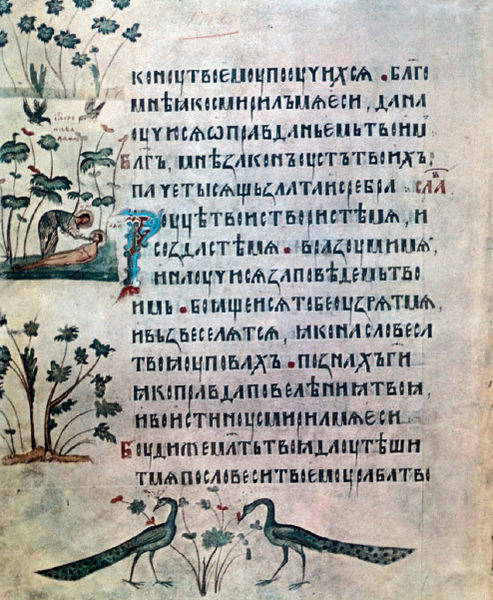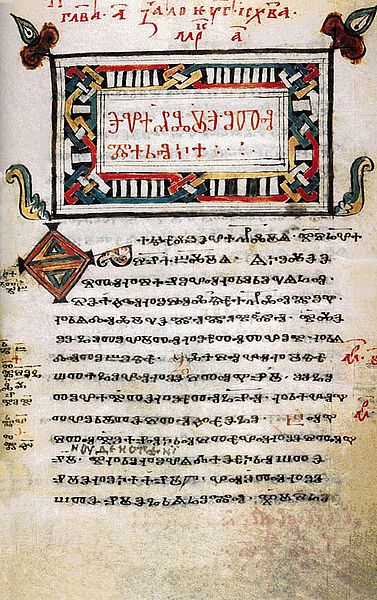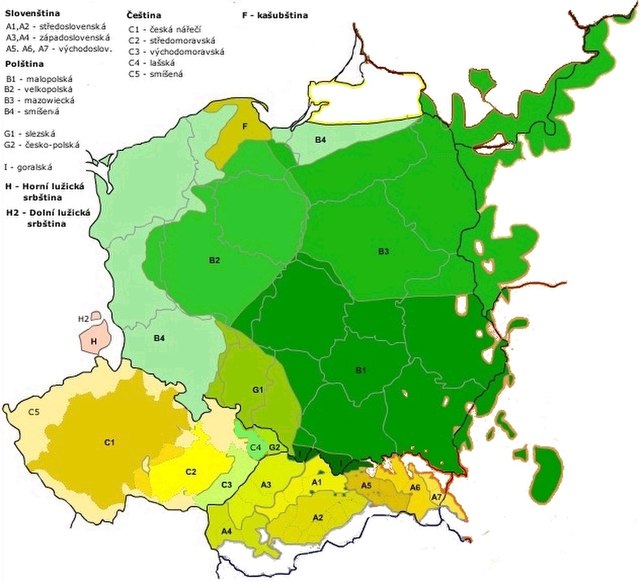Church Slavonic, also known as Church Slavic, New Church Slavonic, New Church Slavic or just Slavonic, is the conservative Slavic liturgical language used by the Eastern Orthodox Church in Belarus, Bulgaria, North Macedonia, Montenegro, Poland, Ukraine, Russia, Serbia, the Czech Republic and Slovakia, Slovenia and Croatia. The language appears also in the services of the Russian Orthodox Church Outside of Russia, the American Carpatho-Russian Orthodox Diocese, and occasionally in the services of the Orthodox Church in America.
Page from the Spiridon Psalter in Church Slavonic
The Slavic languages, also known as the Slavonic languages, are Indo-European languages spoken primarily by the Slavic peoples and their descendants. They are thought to descend from a proto-language called Proto-Slavic, spoken during the Early Middle Ages, which in turn is thought to have descended from the earlier Proto-Balto-Slavic language, linking the Slavic languages to the Baltic languages in a Balto-Slavic group within the Indo-European family.
Baška tablet, 11th century, Krk, Croatia.
14th-century Novgorodian children were literate enough to send each other letters written on birch bark.
10th–11th century Codex Zographensis, canonical monument of Old Church Slavonic (written in Glagolitic script)
West Slavic dialect continuum with major dialect groups





